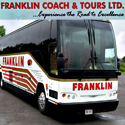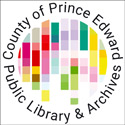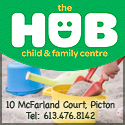Create a kit to be prepared in case of emergency
Administrator | May 05, 2025 | Comments 0
It is more common every year to see extreme weather events that can develop quickly, such as severe storms, flooding and air quality events like wildfires. These weather events can cause power outages, delays in delivery of supplies (including food and medication) and dangerous outdoor and travel conditions.
The South East Health Unit (SEHU, formerly Hastings Prince Edward Public Health) reminds the public during national Emergency Preparedness Week (May 4-10) that it is important to have an emergency kit that can sustain your family for a minimum of 72 hours.
This year’s theme “Plan for every season” reflects challenges facing Ontario on a seasonal basis, and the opportunities to practice emergency preparedness throughout the year.
Create an emergency kit to prepare yourself and your family (including pets) before an emergency occurs.
When creating a kit, consider sufficient amounts of non-perishable food that can be prepared without cooking, a supply of bottled water, medication, a first aid kit, clothing and blankets. Flashlights, extra batteries and a portable radio will help you to keep in touch with your community. Be aware of where important papers are stored and ensure you can access them quickly if needed.
Consider the needs of those who rely on you including children, those with special needs, elderly parents and pets. Have a plan of where you can meet if you get separated, and have a common contact person designated outside of your area so you can let each other know how you are doing.
Your emergency kit should have everything you and your household would need to be safe and take care of yourselves for at least three days immediately following an emergency.
Essentials
Consider including the following items to have in your emergency kit:
- food (non-perishable and easy-to-prepare items, enough for three days) and a manual can opener
- bottled or bagged water (4 litres per person for each day) and backup water purification tablets
- medication(s)
- toilet paper and other personal items such as soap, shampoo, toothbrush, toothpaste, etc.
- personal protective equipment (PPE) such as medical masks and respirators
- back up chargers and power banks for cell phone or mobile device
- cash in small bills
- portable light source such as a flashlight, headlamp or glow stick
- radio (crank or battery-run)
- extra batteries
- first-aid kit
- candles and matches/lighter
- hand sanitizer or moist towelettes
- important papers such as a copy of your emergency plan, identification, contact lists, copies of prescriptions, etc.
- extra car and house keys
- whistle (to attract attention, if needed)
- zip-lock bags (to keep things dry)
- garbage bags and duct tape
Additional considerations
The following list includes additional items you may require to meet your household’s unique needs:
- items for babies and small children such as diapers, formula, bottles, baby food, etc.
- comfort and sentimental items such as photos of loved ones, irreplaceable items, etc.
- prescription medication
- medical supplies, equipment and copies of care/support plans including contact information for doctors or specialists
- extra pair of glasses or contact lenses and solution
- pet supplies
- any other items specific to your household’s needs
Extra supplies for evacuation
The following list includes items to have ready in case you need to leave your home:
- seasonal clothes, shoes and accessories such as hats, gloves, etc.
- sleeping bags or blankets
- lightweight plates and utensils
- survival multi-tool that includes a screwdriver, pocketknife and other basic tools
- local map with your safe meeting places identified
- playing cards, travel games and other small activities
- pen or pencil and a small paper/notepad
Filed Under: News from Everywhere Else
About the Author:
































